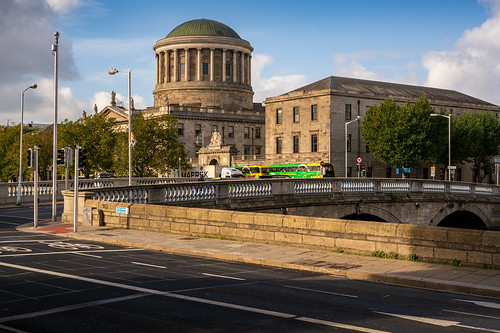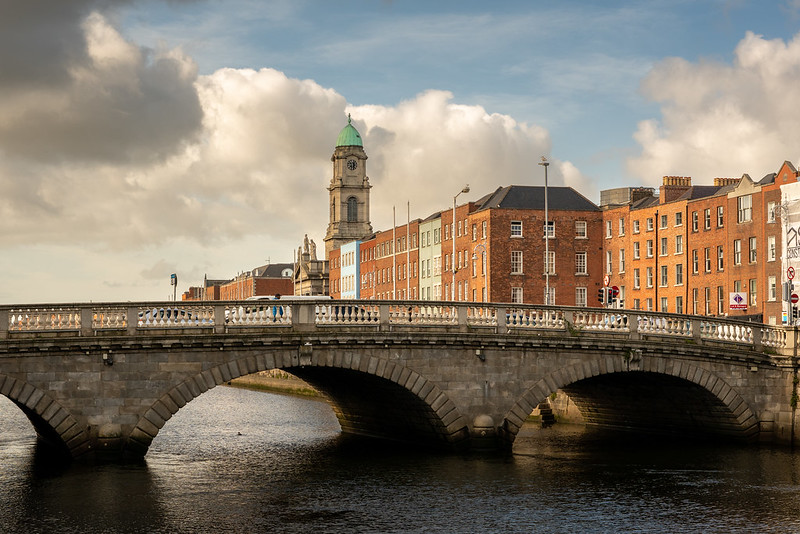Bridges of Dublin – In this series Craig O Reilly examines the history of some of Dublin’s most famous Liffey crossings
O’ Donovan Rossa Bridge
The O’ Donovan Rossa Bridge is a stone road bridge joining Winetavern Place to Chancery Place. It is not actually the first bridge built on the site; and it has had different names before.
The original wooden bridge was erected in 1683. It was named Ormonde Bridge, after James Butler, Duke of Ormonde, who was Lord Lieutenant from 1677-1685.
This bridge was swept away when the Liffey flooded in 1806. Afterwards a new bridge was built in 1816; which we see today, and was renamed O’ Donovan Rossa Bridge by the early free State.
The carved heads over its three arches represent plenty, Anna Liffey and Industry, and on the Western side ; Commerce, Hibernia and Peace.
One interesting titbit of history relating to the bridge is it was often the site of battles between combatants from what we now know as Dublin 8 and others in the area.
There was a long-standing feud between the Ormonde Boys (mainly butchers and workers from Ormonde Market) and the Liberty Boys (weavers and tailors from the Coombe Area). It was said to have come about due to a dispute over their respective places in the annual riding of the franchises, which was a way of marking the boundaries of the Liberties.
Battles could extend the length of the keys from Capel Street bridge to Islandbridge. The bridge could be impassable for the length of a whole day. The battles were often fought with both sides vying for mastery of the bridge; sometimes thousands of combatants would be engaged in the fighting.
Today the site is a little more peaceful, with tourists stopping over the bridge to admire its design.
Father Mathew Bridge
What we now call Father Mathew Bridge is the site of different bridges with different names throughout history; Whitworth Bridge, Dubhghalls Bridge or simply The Bridge. The site was known as the “Ford of the Hurdles” which forms the name Baile Atha Cliath.
In 1120, King John gave the citizens of Dublin permission to “make a bridge over the water of the Avenlithe wherever it may appear expedient to them.”
There is doubt as to whether even this bridge was the first built over the river, as there may have been a bridge used in the Norman invasion.
The first bridge collapsed in 1385, and we are not sure if the Dominicans rebuilt it. The present bridge was built in 1818 and named Whitworth Bridge after Charles, Earl of Whitworth.
Today it takes its name after Father Mathew, who was a leader in the temperance movement. The Total Abstinence Society, knows as the Knights of Father Mathew, had over 150,000 members at one point in time.
Liam Mellows Bridge
The oldest, and one of the most pleasant of Dublin’s bridges; Liam MallowS Bridge hosts three arches and a number of stone carvings. It was designed by General Charles Vallency, who was an engineer in the ordinance survey office.
It’s seen very little change since it was built in 1768, even though it has lasted through periods of political upheaval.
Originally known as the Queen’s bridge and Maeve’s Bridge, it was renamed in 1942 in honour of Liam Mellows, who took the anti-treaty side in the Civil War and who took part in the battle of the four courts. He was executed in December 1922 by the Provisional Government. This renaming was enacted by Fainna Fáil who had come to power in the 1930s and who had been on the anti-treaty side during the Civil War.











